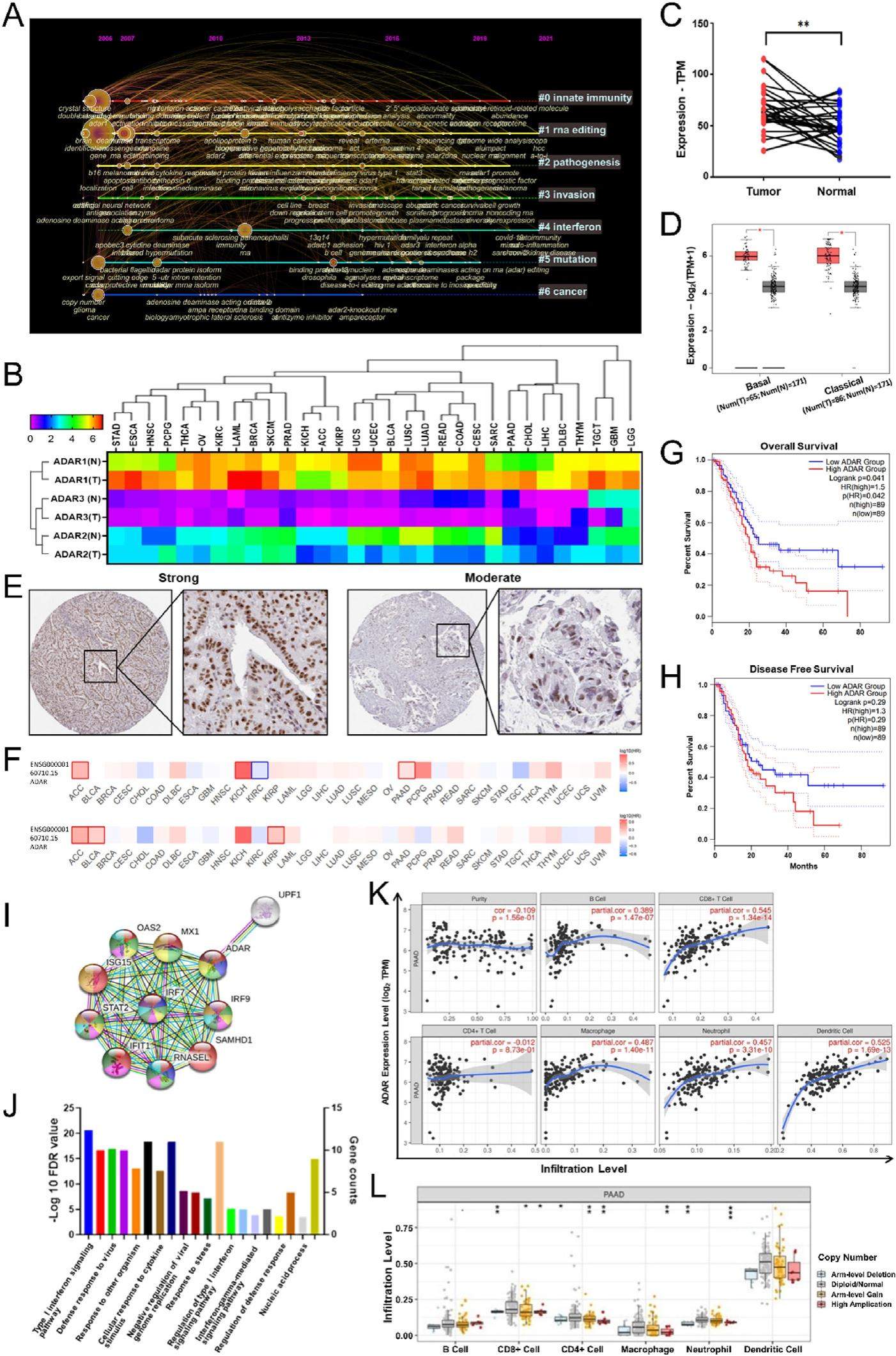
Prognostic value of the RNA editing enzyme: ADAR1, and its association with immune cells infiltration in pancreatic adenocarcinoma


The adenosine deaminase acting on RNA (ADAR) protein family was well characterized as RNA editing enzymes converting adenosines to inosines (A-to-I) in dsRNA structures. They share a homologous structure including the dsRNA-binding domain and the deaminase domain. ADAR1 function as the primary editing enzyme for A-to-I mutation because of its higher and ubiquitous expression compared to ADAR2 and ADAR3 in eukaryotes. ADAR1 has recently shown to regulate the canonical RNA sensing pathways such as retinoic acid-inducible gene-I-like receptors (RLRs) and protein kinase R (PKR). And the level of dsRNA recognition and editing by ADAR1 plays an important role in restraining autoimmunity activity and maintaining self-tolerance. Since a large amount of posttranscriptional editing of A-to-I conversions was detected in mammals, the biological effects and the accurate role of ADAR1 in human diseases have attracted increased attention. Previous reports suggest that ADAR1 is involved in more than ten types of tumors. However, the prognostic and therapeutic effects of ADAR1 in cancers have not been fully investigated.
